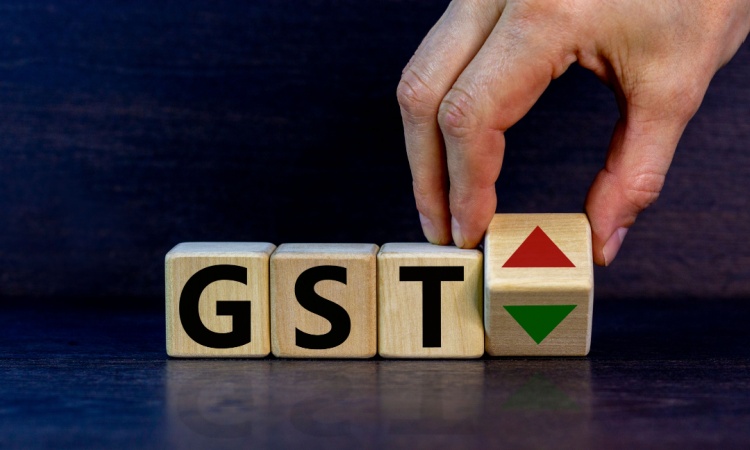How New GST Rates Impact Two Wheeler Insurance
How New GST Rates Impact Two Wheeler Insurance

Recently, the GST Council (Goods and Services Tax) revised tax rates and introduced a two-tier system. Under this new structure, automobiles are taxed at either 5% or 18%, while luxury vehicles and sin goods, such as tobacco, face an additional 40% tax.
The 5% rate applies to commonly used items like packaged food and footwear, while the 18% rate applies to goods and services such as restaurant services, telecom, and entry-level motorcycles. Meanwhile, essential items, including life insurance, remain exempt with a 0% tax rate.
In this blog, we will explore how these new GST rates impact motor vehicles in detail.
The Latest News: Revised GST Rates on Vehicles
The government’s revised GST structure is as follows:
40% GST is levied on two wheelers with an engine capacity above 350 cc and four-wheelers above 1500 cc capacity.
18% is levied on the bikes with an engine capacity lower than 350 cc and four wheelers below 1500 cc capacity.
5% concessional tax is applicable on all EVs.
This restructuring is aimed at easing the burden on middle-class buyers, making everyday commuting vehicles more accessible while maintaining fair taxation on luxury models.
How Do New GST Rates Impact Two Wheeler Insurance Premiums?
Insurance premiums are divided into two main components:
1. Base Premium:
The insurance company calculates this based on elements such as the Insured Declared Value (the maximum amount your insurance company will pay you if your bike is stolen or completely damaged beyond repair), engine capacity, and risk profile.
2. GST Component:
An additional tax is applied to the two wheeler insurance premium amount.
Currently, GST is levied on general insurance products, including motor insurance, at a rate of 18%. This means that even if the insurer charges a base premium of ₹5,000, the final cost to the customer is ₹5,900 after adding GST.
Therefore, when the government lowers GST on motor vehicles, there is a ripple effect on insurance costs, since the taxable amount reduces. However, third-party bike insurance premiums remain unchanged, as these rates are set by the regulator, IRDAI, and are standard across different engine capacities.
Other Factors Contributing to Insurance Premiums
Here are some of the other factors that contribute to insurance premiums:
Location:
Cities with high traffic or accident rates attract higher insurance costs.
Usage of Bike:
Daily commuting bikes are riskier than occasional-use bikes, affecting premiums.
Optional Add-Ons:
Covers like zero depreciation, roadside assistance, or engine protection increase the premium.
No Claim Bonus (NCB):
Claim-free riders receive discounts on their own damage premium.
Anti-Theft Devices:
Installing approved security systems can lower premium rates.
Policy Tenure:
Longer-term policies may offer discounted premiums over yearly renewals.
Ways to Reduce the Impact of GST on Your Two-Wheeler Insurance
Two-wheeler insurance rates are subject to a set 18% GST, but you can still control the total cost of your policy by planning ahead.
First, you should know that the Insured Declared Value (IDV) directly affects your rate. A bigger IDV gives you more protection, but also means that your base rate (and the GST component) will be higher. Instead, picking the right IDV—neither too high nor too low—helps balance cost-effectiveness with safety.
Here are some helpful tips to lessen the effects of GST:
Choose Long-Term Policies:
If you choose an insurance that covers more than one year, your premiums will stay at the current rate. This will lower the total amount of GST you pay over time.
Use the No Claim Bonus (NCB):
Keep your record claim-free to get NCB savings. This reduces both your base rate and the GST that goes with it.
Don't Bother with Extra Add-Ons:
Extra coverages like engine security or zero depreciation are helpful, but they increase rates. Pick out only the ones that work for you.
Install Anti-Theft Devices:
Security devices approved by the IRDAI can lower your rates, which will indirectly lower your tax bill.
Buy Online:
When you buy insurance online, you can often get savings and skip the intermediary fees that add up to higher prices.
Third-party bike insurance is still affordable for riders who want to save money. It meets the legal requirements and low rates, but it doesn't cover loss or damage to your property.
Policyholders can smartly deal with the effects of GST while still getting full or basic insurance for their bikes by following these steps.
Conclusion
The reduction in GST rates on motor vehicles does not just lower bike prices; it also reduces the cost of insuring them. Since insurance premiums include GST, a lower tax directly decreases what policyholders pay each year. This makes comprehensive coverage more affordable, encourages buyers to consider long-term policies, and improves overall compliance with mandatory insurance rules.
Since two wheelers dominate India’s transport sector, these changes bring widespread relief to everyday commuters while boosting the automobile and insurance industries. Lower premiums can drive higher adoption of insurance policies, while affordable pricing may revive demand for entry-level bikes. This results in a more affordable, safer, and better-protected riding environment for millions of people.
Disclaimer: The above information is for illustrative purposes only. For more details, please refer to the policy wordings and prospectus before concluding the sales.
RELATED ARTICLES
GST on Bike Insurance in 2025: Rates, Impact & Savings Tips
GST on Two-wheelers/Motorcycles in 2022
How to Add GST Number To Your Bike Insurance Policy?
Tips to Lower Your Two Wheeler Insurance Premium in 2025
Reduce Bike Insurance Premium with Online Tools










 Health Insurance
Health Insurance  Travel Insurance
Travel Insurance  Car Insurance
Car Insurance  Cyber Insurance
Cyber Insurance  Critical Illness Insurance
Critical Illness Insurance
 Pet Insurance
Pet Insurance
 Bike/Two Wheeler Insurance
Bike/Two Wheeler Insurance  Home Insurance
Home Insurance  Third Party Vehicle Ins.
Third Party Vehicle Ins.  Tractor Insurance
Tractor Insurance  Goods Carrying Vehicle Ins.
Goods Carrying Vehicle Ins.  Passenger Carrying Vehicle Ins.
Passenger Carrying Vehicle Ins.  Compulsory Personal Accident Insurance
Compulsory Personal Accident Insurance  Travel Insurance
Travel Insurance  Rural
Rural 











